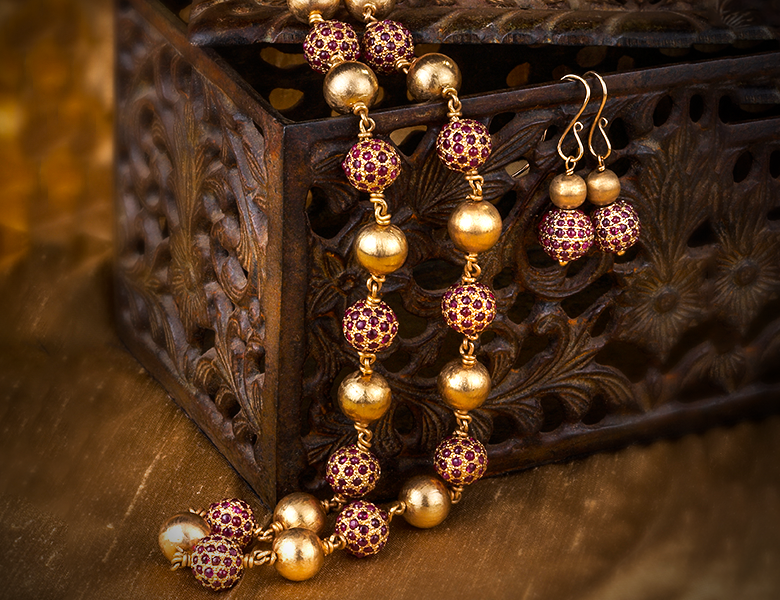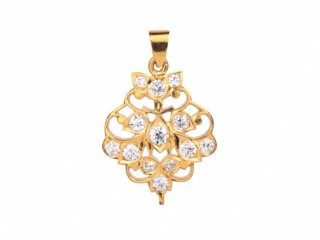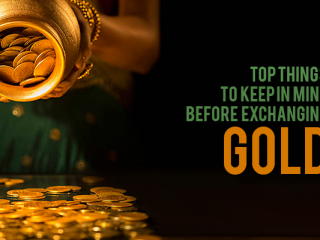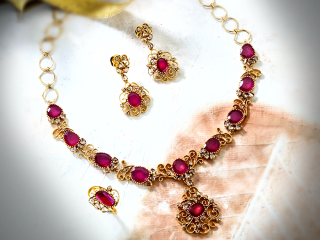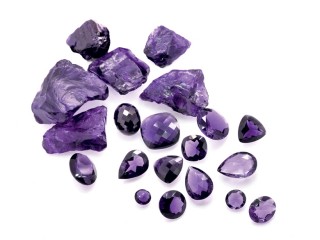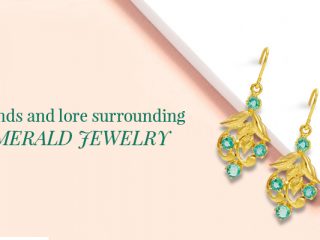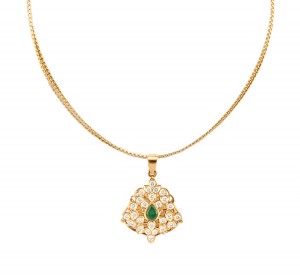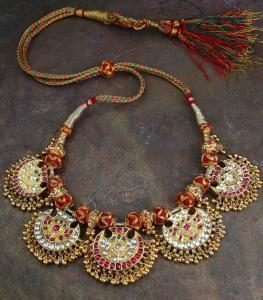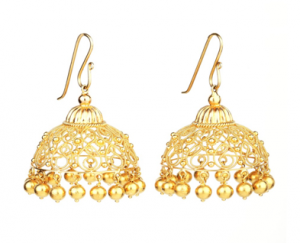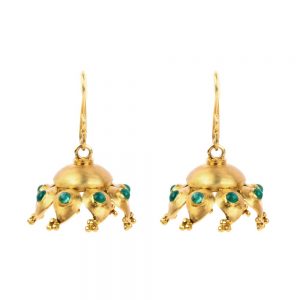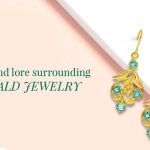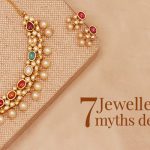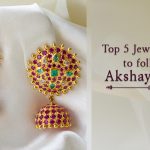A Step Into The Past
Indian jewellery has long since become an integral part of the nation’s culture and tradition. Different periods in history have seen different designs emerge and add to Bharata’s wealth of beauty and elegance, and the history goes back 5000 years maybe more.
Silver, gold, gems and stones are the prevailing design elements and different regions of India have found unique ways to craft and wear jewelry made from such materials. Good examples of these include Andhra and Orissa’s silver filigree work, the Meenakari enameling that Rajasthan has shown to prefer, the South’s love of temple jewelry best seen in places like Nagercoil, and the capital’s (Delhi) love for Kundan.
Anklets, rings, necklaces, you name it, there’s an Indian jewelry for every area of the body. Such is the spread of Indian craftsmanship. As the decades went by new generations of artisans learned to polish silver and gold and the process in extracting semi-precious stones from mines. This led to a whole new level of design as evidenced by the time of kings and shahs. Those empires (like the Rajputs and Mughals) that ruled India wouldn’t have expected how they’d end up leaving their mark on the culture of jewelry in the nation. Modern India has therefore accrued thousands of years of tradition-force and cultural-power in the jewelry you see in stores and boutiques.
Range of Indian Jewelry
1. Traditional or Ethnic Jewelry
You’ll find this type of design element ruling the roost of South Indian jewelry where close-set enamel work is favored. More often than not, you’ll see diamonds and cob rubies going onto a wide gold or silver template etched to perfection. The style has earned a name for itself. Nakaash jewelry is a South Indian specialty that goes back hundreds of years. Modern times call for modern uses and Nakaash today suits kutcheries and the party scene. They’re made to stand out with their intricate work, enamels in varied designs making them perfect for events and marriages.
2. Lightweight Jewelry
Simple linear designs incorporating small stones (precious or semi precious) on a thin line of gold or silver are quite reminiscent of this kind of artisanship. Their origins are attributed to the Northern and Central regions of Kutch, Maharashtra and Gujarat. Considering their history, you can certainly expect these antiques to come finished in gold templates, displaying either cut or uncut diamonds. Dangling beads are not uncommon in this technique.
3. Kundan Jewelry
Purely the brainchild of old-world Rajasthan, you’ll find some of the simplest as well as grandest artisanship in these pieces. With stylish use of enamel (Meenakari) touches in the mounting of uncut diamonds onto lac fillings, the overall look and feel of Kundan is royal. Different sizes of gemstones are used based on the design and they bring a sense of rich flair to the piece in question.
4. Invisible Setting Diamond Jewelry
The idea of ‘invisible setting’ is that the precious stone, in this case diamond, slips into a metal framework. Being just below the surface display, the framework is ‘invisible’. So when you see gemstones and diamonds sitting side by side giving the illusion that they’re a solid stretch of preciousness with nothing to hold them up, you’ve just witnessed the ‘invisible setting’ technique in action. This is mostly machine made, as can be imagined. Gold is used minimally with the intention to make the size of the diamonds appear bigger.
5. Filigree Jewelry – Orissa
While many regions of India can boast their own series of jewelry, we bring your attention to Orissa whose craftsmanship in this regard is unmatched. Their gold and silver filigree alone is elegant, ambitious, delicate and sensual. Shell, wood, metal, bead, stone are some of the materials used in this particualr kind of primal art. As simple as it may sound, they’re quite the challenge for modern designers. In addition to reflecting Orissa’s ancient religious and tribal-culture beliefs, these pieces have been given a modern twist to better suit the current market. They’re as unique as they are beautiful.
6. Tribal jewelry – Up North (Kashmir & Ladakh); the North East
You’ll observe that the Kashmir technique uses mostly turquoise and coral by way of semi-precious stones. They’re set in well-made almost elaborate designs of oxidised silver. Circular chain links bring a sense of charm and tuneful elegance and are a characteristic feature of Kashmiri tribal jewelry. Ladakh has plenty of the same stone and bead-work but made more in clusters with large polished stones that bring distinction and balance or small metallic bell-like additions to add mild glints to the pieces in this tribal jewelry. North East India’s tribal style incorporates bold settings of stone and filligree work. Sometimes tiny beads are made to look grand based on the number of them used in the design.
7. Bengali Jewelry
One of the most outstanding testaments to Indian jewelry culture, Bengali artistry is a superb sight. It uses a distinctly open design setting, meaning you can see the framework on which all the ornamentations go. Thick or thin, the way gold is wielded and shaped is nothing short of splendid. There’s little wonder how this kind of jewelry made its way into royal halls. Modernity has brought its own touch to Bengali design. Whether it’s parties or marriages, there’s a bold statement just waiting to be made. Bangles are some of the thinnest beauties in this range. Medium sized ones include head circlets and waist chains.
At Gehna we have made it our custom to understand everything to know about Indian jewelry. We use sublime methods and techniques and help you design a customized piece of jewelry based on any Indian cultural idea; perhaps even an ideal combination of international ideas. The possibilities are endless because of how much can be acheieved through a custom-made piece of jewelry that, say, is Bengali inspired, Kundan in theme or Naakash in setting. Gehna has set the standard for excellence in the customized jewelry field.
View Our Jewellery Collection: Stacking Rings | Necklaces | Jhumki | Pendants | Nosepins | Earrings
